ĐÁNH GIÁ KẾT QUẢ PHẪU THUẬT TẠO HÌNH ĐIỂM LỆ 3 ĐƯỜNG CẮT HÌNH CHỮ NHẬT CÓ ÁP 5 FLUOROURACIL TRONG ĐIỀU TRỊ HẸP ĐIỂM LỆ MẮC PHẢI
Nội dung chính của bài viết
Tóm tắt
Mục tiêu: Đánh giá kết quả phẫu thuật tạo hình điểm lệ 3 đường cắt có áp 5 fluorouracil (5FU) trong điều trị hẹp điểm lệ mắc phải sau 6 tháng phẫu thuật. Phương pháp nghiên cứu: Nghiên cứu mô tả tiến cứu, có so sánh tại khoa Tạo hình thẩm mỹ - Thần kinh nhãn khoa Bệnh viện Mắt thành phố Hồ Chí Minh trong thời gian từ tháng 12/2023 đến tháng 8/2024. Bệnh nhân được chẩn đoán hẹp điểm lệ độ 0 hoặc 1 được chia thành 2 nhóm. Nhóm 1 bệnh nhân được điều trị phẫu thuật tạo hình điểm lệ 3 đường cắt không áp 5 fluorouracil, nhóm 2 bệnh nhân được điều trị phẫu thuật tạo hình điểm lệ 3 đường cắt có áp 5 fluorouracil. Phẫu thuật được kết hợp với đặt ống mini-monoka S1.1500 vào lòng lệ quản và rút ra sau 3 tháng. Kết quả: Có 60 mắt của 35 bệnh nhân. Tuổi trung bình 52 ± 12 tuổi, hẹp điểm lệ độ 0 chiếm 75%, độ 1 chiếm 25%. Sau phẫu thuật 6 tháng, Kết quả điều trị cho thấy tỷ lệ thành công về mặt chức năng đạt 83,3% ở nhóm không áp 5FU và 90% ở nhóm có áp 5FU. Về mặt giải phẫu, tỷ lệ thành công ở nhóm không áp 5FU là 86,7%, so với 93,3% ở nhóm có áp 5FU, tỷ lệ thành công chung ở nhóm không áp 5FU và có áp 5FU lần lượt là 83,3% và 90% cho hai nhóm. Kết luận: Việc sử dụng 5FU giúp giảm tỷ lệ tái hẹp và tăng tỷ lệ thành công về mặt chức năng và giải phẫu.
Chi tiết bài viết
Từ khóa
hẹp điểm lệ, 5 fluorouracil, phẫu thuật tạo hình điểm lệ
Tài liệu tham khảo
2. M. Chak and F. Irvine, “Rectangular 3-snip Punctoplasty Outcomes: Preservation of the Lacrimal Pump in Punctoplasty Surgery,” Ophthal. Plast. Reconstr. Surg., vol. 25, no. 2, pp. 134–135, Mar. 2009, doi: 10.1097/IOP. 0b013e3181994062.
3. X. Cao, Y. Wu, Y. Song, and Q.-H. Liu, “Rectangular 3-snip punctoplasty versus punch punctoplasty with silicone intubation for acquired external punctal stenosis: a prospective randomized comparative study,” Int. J. Ophthalmol., vol. 14, pp. 849–854, Jun. 2021, doi: 10.18240/ijo.2021.06.09.
4. M. J. Ali, A. Ayyar, and M. N. Naik, “Outcomes of rectangular 3-snip punctoplasty in acquired punctal stenosis: is there a need to be minimally invasive?,” Eye, vol. 29, no. 4, Art. no. 4, Apr. 2015, doi: 10.1038/eye.2014.342.
5. H. Goldberg, A. Priel, O. Zloto, T. Koval, L. Varkel, and G. J. Ben Simon, “Kelly punch punctoplasty vs. simple punctal dilation, both with mini-monoka silicone stent intubation, for punctal stenosis related epiphora,” Eye, vol. 35, no. 2, pp. 532–535, Feb. 2021, doi: 10.1038/s41433-020-0891-3.
6. S. J. Park, J. H. Noh, K. B. Park, S. Y. Jang, and J. W. Lee, “A novel surgical technique for punctal stenosis: placement of three interrupted sutures after rectangular three-snip punctoplasty,” BMC Ophthalmol., vol. 18, no. 1, p. 70, Dec. 2018, doi: 10.1186/s12886-018-0733-2.
7. S. Abd El Ghafar, A. M. El-Kannishy, M. M. Elwan, D. Sabry, H. M. Kishk, and E. M. Elhefney, “Perforated punctal plugs with adjuvant use of mitomycin-C in management of acquired external punctal stenosis grades 0 and 1,” Can. J. Ophthalmol., vol. 52, no. 6, pp. 606–610, Dec. 2017, doi: 10.1016/j.jcjo.2017.06.009.
8. Chung Nữ Giang Thanh, “Đánh giá kết quả điều trị hẹp điểm lệ mắc phải bằng ống lệ quản đôi tự cố định,” Luận án Chuyên khoa cấp II, Đại học Y Dược TP.HCM, 2016.
9. N. T. Chalvatzis, A. K. Tzamalis, I. Mavrikakis, I. Tsinopoulos, and S. Dimitrakos, “Self-retaining bicanaliculus stents as an adjunct to 3-snip punctoplasty in management of upper lacrimal duct stenosis: a comparison to standard 3-snip procedure,” Ophthal. Plast. Reconstr. Surg., vol. 29, no. 2, pp. 123–127, 2013, doi: 10.1097/IOP. 0b013e31827f5a10.


